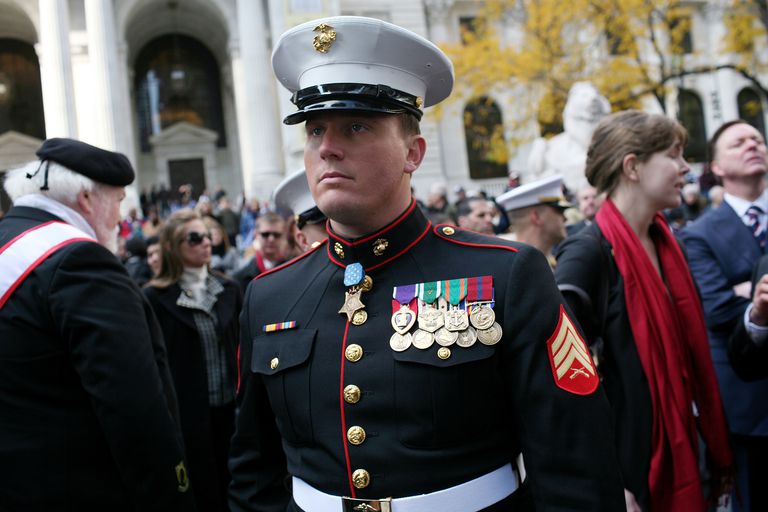Perhaps the two “most famous” veterans’ associations are also the oldest – the American Legion and the Veterans of Foreign War (VFW). American Legion
The American Legion (sometimes simply called the “Legion”) started out in World War I as a group of twenty officers who served with the American Expeditionary Force (AEF) in France – AEF Headquarters asked these staff for ideas on how to improve morale troops.
One of the officers, Lieutenant Colonel Theodore Roosevelt Jr. (eldest son of the 26th President) proposed to the veterans’ organization. In February 1919, this group formed a provisional committee and selected several hundred officers who had the trust and respect of the entire army. The following month, about 1,000 officers and military personnel attended the first organizational meeting, known as the Paris Assembly. At this meeting, the group adopted an interim constitution and the name “American Legion”.
The American Legion was chartered by Congress in 1919 as a patriotic, veteran veteran mutual assistance organization and the first American Legion post in the United States – General John Joseph Pershing, postal number 1 in Washington, DC, organized on March 7, 1919, and received the first chart. issued to any Legion post on May 19, 1919. Since then, the American Legion has grown from a group of war-weary World War I veterans to one of the most influential non-profit groups in the United States of America – the American Legion is a public service organization that currently employs over 4 million people in 14,000 positions worldwide.
Posts are organized into 55 departments, one each for 50 states, plus the District of Columbia, Puerto Rico, France, Mexico, and the Philippines.
Eligibility for American Legion membership is limited to those honorably dismissed by veterans and current personnel of the United States Army, Navy, Marine Corps, Coast Guard, or Air Force who have served at least one day of active service during any of the following periods:

World War I: April 6, 1917 to November 11, 1918.
World War II: December 7, 1941 to December 31, 1946 (except for the dates of participation in the US Merchant Marine Treaty – December 7, 1941 to August 16, 1945)
Korean War: June 25, 1950 to January 31, 1955
Vietnam War: February 28, 1961 to May 7, 1975
1982 War and Operation in Lebanon Urgent Rage (Grenada): August 24, 1982 to July 31, 1984
Operation Simple Business (Panama): December 20, 1989 to January 31, 1990
Gulf War / War on Terror (Desert Shield, Desert Storm, Operation Enduring Freedom, and Iraqi Operation Freedom): August 2, 1990 to present
The VFW traces its roots back to 1899 with two veteran organizations:
American veterans of the foreign service ice formed for veterans of the Spanish-American War (1898)
National Society of the Army of the Philippines, formed for veterans of the Philippine-American War (aka Philippine Rebellion) (1899-1902)
The two were created as local organizations to provide rights and benefits for their service, since many of them arrived home wounded or sick and there was no medical care or veterans’ pensions for them; they had to take care of themselves.
The VFW was formed on September 17, 1914, at a conference at the Schenley Hotel in Pittsburgh, Pennsylvania, where two veterans’ organizations merged into one and chapters were formed in Colorado, Ohio, and Pennsylvania.
Of the three positions that claim to be first, the national VFW recognizes the Denver Post as first; now officially “VFW Post 1.
By 1915, membership had grown to 5,000, and by 1936, when it became a government-funded non-profit organization, membership was nearly 200,000. Today, membership is worth about 1.4 million (although, national membership in VFWs has decreased from 1. 8 million in 2004).
To be a member of the VFW, an individual must be a US citizen or citizen with an honorary certificate from the US military, or currently serving in the United States Army, Marine Corps, Navy, Air Force, or Coast Guard. Membership also requires military service overseas during an operation or conflict and decoration with the Armed Forces Expeditionary Medal, Campaign Medal (or ribbon).
Both the American Legions and the VFW have gone beyond just veterans helping veteran companions – from their beginning to provide financial, social and emotional support to members of the United States military, veterans and their dependents, and to be leaders of community involvement in areas such as mentoring youth groups , assistance in community kitchens, and volunteering for blood donation (to cite a few examples).